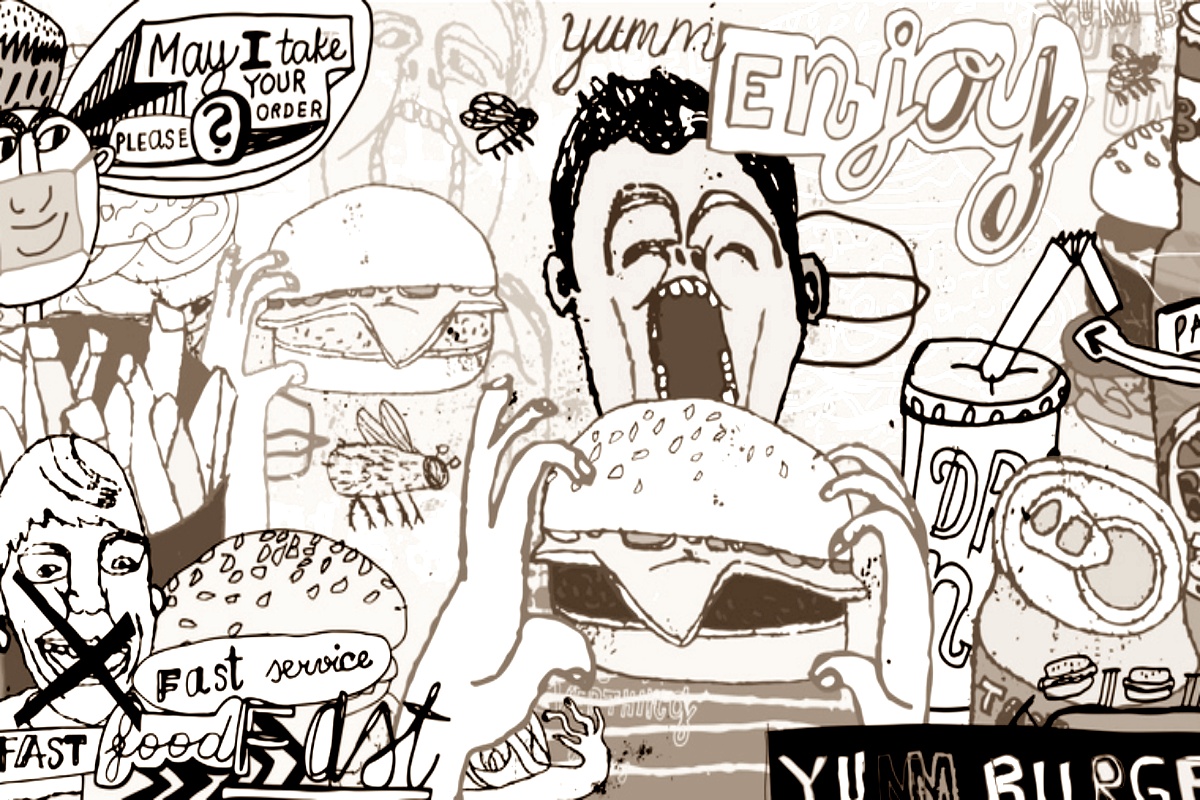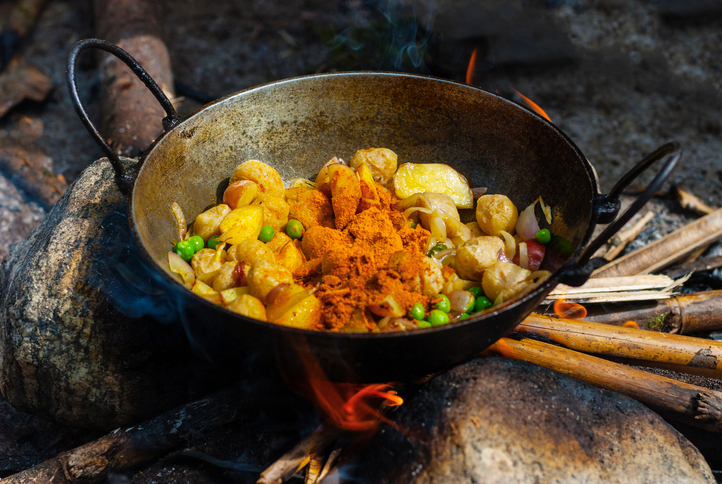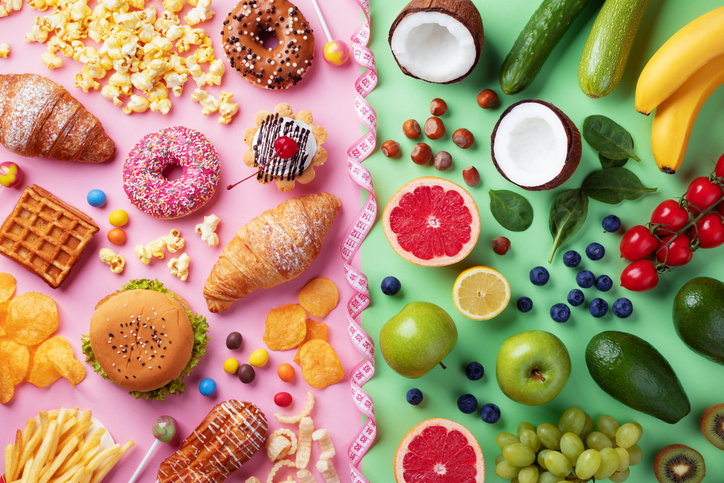Quintessential Kolkata top fast food picks
Explore the vibrant flavors of Kolkata's street food scene with our top picks, from succulent Kathi Rolls to irresistible Phuchka. Indulge in the culinary magic of the 'City of Joy.'
The trend, however, seems to be changing as the slow and steady movement of food has been picking up in the past years.

Hand drawn story of people serving and eating burgers. Concept Consumerism, Environmental issues.
Fast food is not a new phenomenon, but, slow food is. Slow food, however, is much more than just being the opposite of fast food. Fast food indeed suits the fast-paced lives and for many, it is still a good choice despite the proven ill effects of such ‘go-to foods’ on health.
Since the early 20th century fast-paced world adopted anything and everything that complimented fast ways of life for enhanced productivity and saving time. Fast food became a rage for those looking for fast-served, inexpensive, and easily available, on-the-go, order-in, drive-thru or on-time delivery-perfectly fitting into the need of the time-constraint generation. Fast food although came as a boon for the generation that neither has time for arranging the ingredients nor for cooking, ill effects of such readily available food have become a major cause of health risks over the years.
The trend, however, seems to be changing as the slow and steady movement of food has been picking up in the past years. People are becoming more health cautious and embracing the concept of slow food, especially after the covid 19 pandemic.
Advertisement

Today buying a fruit Popsicle is much cheaper and easier than buying real fresh fruit. The health hazards of regularly eating junk food or food full of preservatives have not been hidden from anyone. Still, fast food gets sales in volumes, maybe because one can get it quickly, more easily, and by paying sparingly. Whereas, eating a proper home-cooked meal will consume one’s time, resources, cost, and energy. President of Slow Food USA, Josh Viertel said, “Slow food shouldn’t have to cost more than fast food. It’s time we take back the ‘Value Meal.”
Many believe that the concept of slow food is for people living a slow life, but, slow food is all about eating organic, natural and imbibing sustainable food habits and following a healthy pace of eating. Fast food may attract adjectives like, tasty, comfortable, or value for money, however, not necessarily has to be of quality, or it might be taking a heavy toll on the health of many.
NCIB research on ‘The Hidden Dangers of Fast and Processed Food*’ states that there may exist a link between fast food, processed food, commercial baked goods, and sweets and the destruction of brain cells and a lowering of intelligence. Candy and sweetened baked goods may even stimulate the brain in an addictive fashion, which can lead to more serious illnesses.
The only food that the human body feels happy about is slow food, it’s good for the brain as well as the overall health of any human being.

Every nook and corner of the world has its own traditional values and cultures around producing, cooking, eating and serving food; the slow food movement basically endorses those old ideas and ways of living and eating.
The slow food movement, began by Folco Portinari on December 10, 1989, in Italy in reaction to fast food and the “fast life” and has since spread worldwide. The founding manifesto of the international Slow Food movement was signed in Paris, France in 1989 by delegates from 15 countries.
A few Slow food Campaigns are working towards:
Slow food will always win the race among other types of foods when it comes to the overall benefits for healthy human survival. Here is the comparison between slow food and fast food:
Slow food movement demands one’s attention to ‘what we eat, ‘how thoughtfully we eat’, ‘how organically and naturally ingredients of the food are produced. Unlike the culture of fast food, which is often eaten fast, and is bad for digestion, comes in individual plastic packaging to aid the ease of on-the-go eating, which further encourages anti-social eating habits.
The slow food concept surrogates the idea of fast-paced modern life by encompassing the sensual pleasures of eating, cooking, and sharing. The concept of ‘farm-to-table’ perfectly aligns with the idea of eating healthy. Slow food is cooked using the freshest, and most natural ingredients. It is a system of values — to fight against the detrimental effects of fast food. Fast food comes with various chemicals and preservatives to sustain its long shelf-life. Fast foods are usually manufactured in bulk with various chemicals and packed in plastic bags to retain their life, and stored in the freezers for long periods of time, this reduces the nutritional value of food and makes it unfit for our digestive systems.
Slow food is all about understanding the sources of food production, which has to be fresh and natural, its cooking methods, how it’s served, and the way and attitude by which it’s taken into the body. Another research published by the National Library of Medicine on the Frequency of eating home-cooked meals and potential benefits for diet and health concluded that “eating home-cooked meals more frequently was associated with better dietary quality and lower adiposity.” Ready-to-eat meals or fast food once cooled down have to be microwaved or re-heated before consumption, this adds more fuel to the fire as the chemicals and preservatives in the packed food and ingredients become more harmful when re-heated.
Fast food companies often indulge in marketing strategies and attractive advertisements like buy one get one free, value meal, combo meal, surprises, free meal coupons, etc, that the consumers end up buying more than they are even hungry for. Whereas slow food eating habit includes, taking more time than usual to chew every bite, and spending more time at the dining table, one can discover that it takes less food to feel full. An NCIB Research ‘The Hidden Dangers of Fast and Processed Food*’ has shown that excess calories shorten lifespan, whereas moderate caloric restriction slows the aging process and protects the body and brain.
Fast food encourages the plastic packaging industry to market their products in the most fashionable manner, whereas, home-cooked and traditional food requires minimal load on the environment and the by-product of such food is absolutely environment friendly.

Although people are getting cautious of their health and food choices it is a long way to go back to where we started. In 2017, Author of the American digital brand, Epicurious, David Tamarkin, said art of “home cooking is dying.”
According to research published by the National Library of Medicine, the Consumption of fast foods is a global phenomenon. India’s fast-food industry which is expanding at the rate of 40% every year, ranks 10th in the fast food per capita spending figures with 2.1% of expenditure in annual total spending.
Advertisement